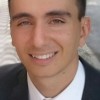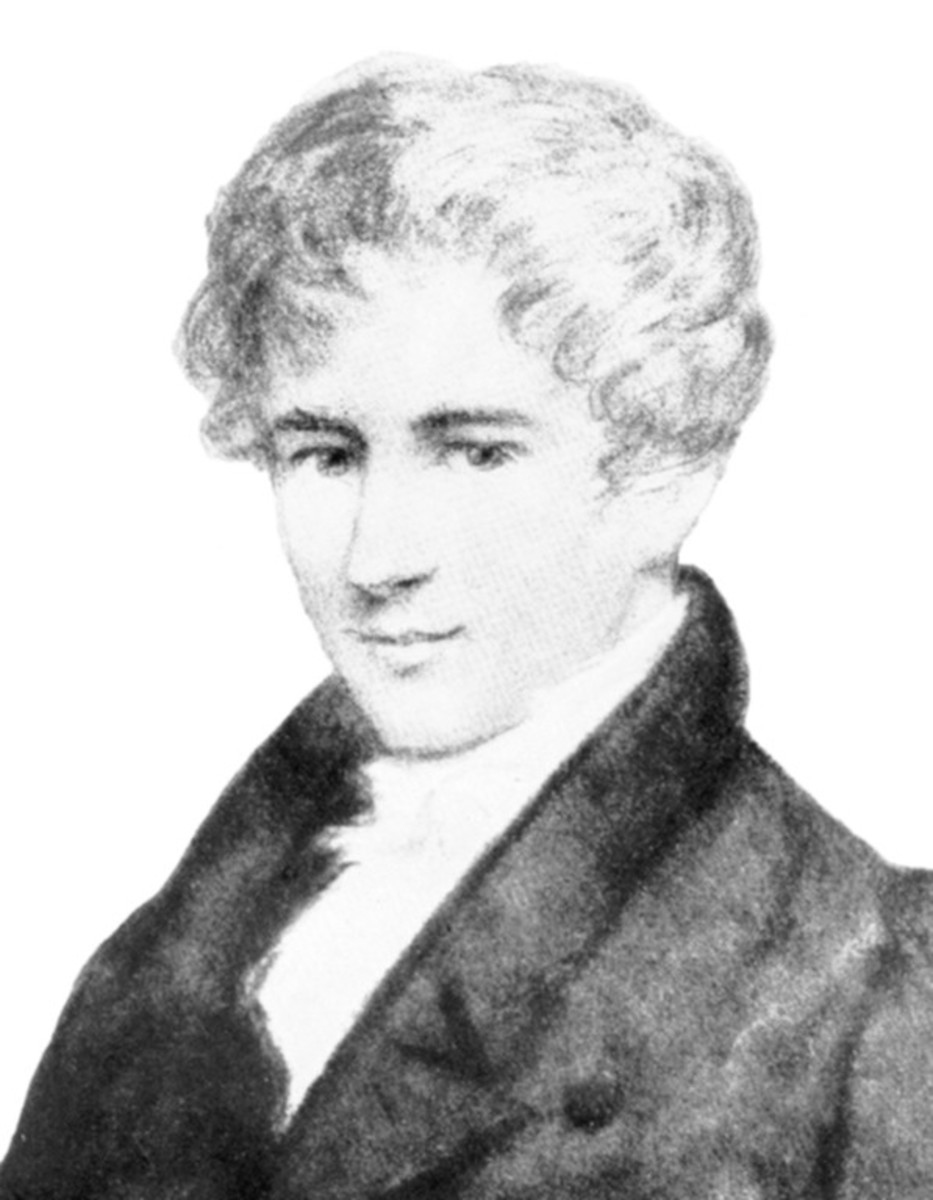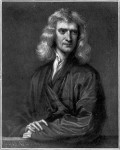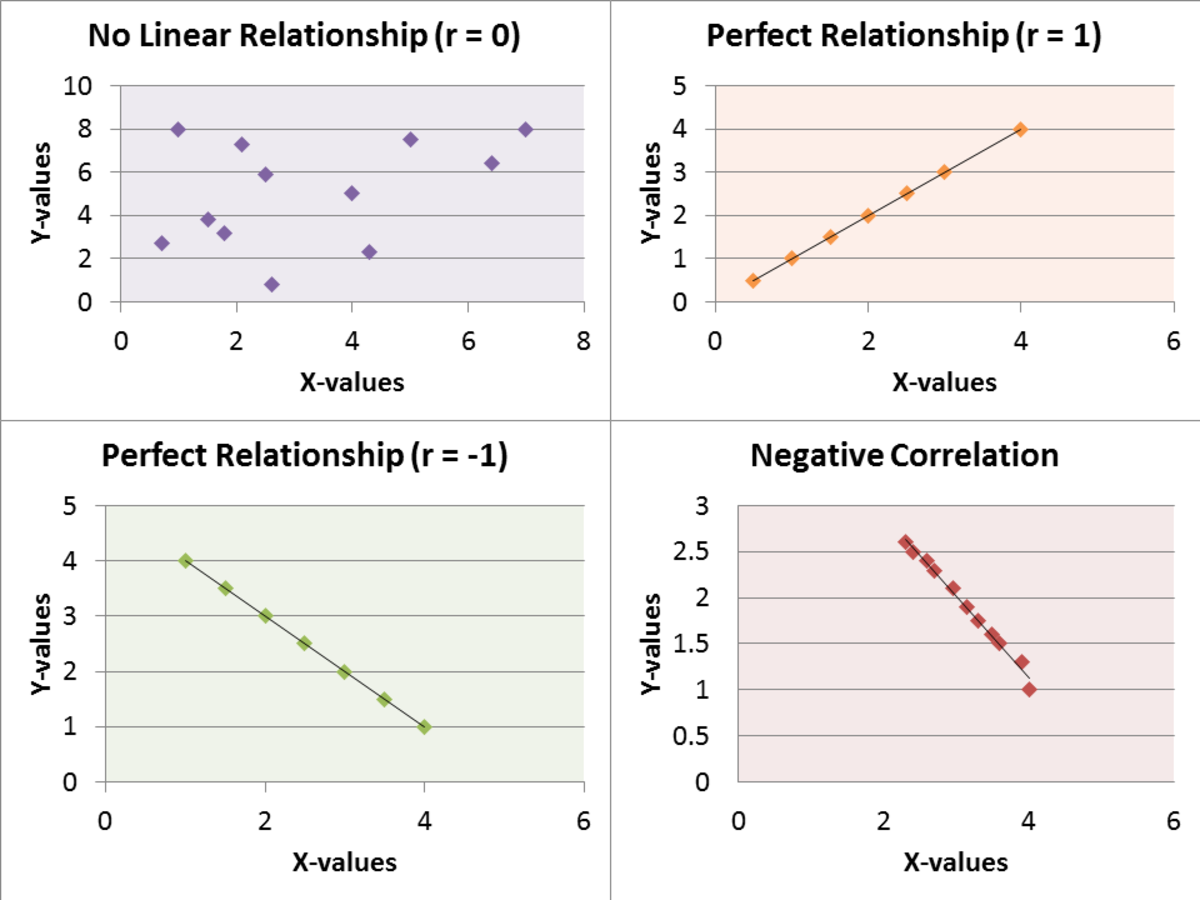10 Mathematicians Who Died Tragically

When we think about a mathematician, it usually comes to mind a quiet a little mad creature locked away in his room, with just a pencil and a piece of paper, writing down problems and solving them. However, history can show us that this has not always been a fact and this list is here to prove it. These ten brilliant men we are about to present you in no particular order have had many kinds of ends ranging from starving to death to being killed by roman soldiers.

Évariste Galois
Galois was a prodigious French mathematician born in Bourg-la-Reine, France on 25 October 1811. He died at the age of 20, but before, he solved a problem that had bothered the most brilliant minds for hundreds of years. (Link 2) He created a theory that was able to tell when an algebraic equation can be solved by radicals (without non-algebraic functions like trigonometric or logarithmic functions).
Galois’s father was the leader of Bourg-la-Reine’s liberal party and was elected mayor of his town during the hundred days (period after Napoleon returned from exile on the island of Elba), which can explain Galois’s political engagement. He was arrested for the first time a couple of days after making a toast on a republican banquet, threatening the life of Louis-Philippe, king of France, but was acquitted two months later.
He was arrested again a couple of months later and, after a cholera epidemic, he was transferred to a nursing home. Someday, a girl went to visit one of the other prisoners. Galois felt in love with her and engaged in an affair.
This relationship did not last long. A couple of weeks after he was freed, his loved one left him. Some days later, Galois was challenged to a duel. The reasons were never clear but most agree that it had something to do with his girl.
The night before the duel, Galois wrote to his friend Auguste Chevalier a letter containing the basic topics about his work. Galois was shot in the stomach at a duel at the age of twenty. Left to die he was found by a peasant. The next day, he died in the hospital without any recognition for his work. A young brilliant mind with a tragic end.
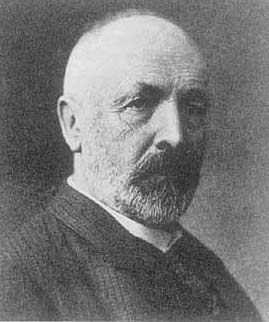
Georg Cantor
Georg Cantor was born on March 3, 1845 in Saint Petersburg, Russia. His contributions are most in the field of set theory, being the first to consider the infinity without the concept of a variable increasing without bonds, but as an actuality. He also showed that there are orders of infinity, meaning that there are infinite sets greater than others are. One thing that cantor was never able to prove was the continuum hypothesis. It states that the set of all real numbers is the next largest infinite set after the set of all integers.
After May 1884, Cantor began to suffer recurring series of nervous breakdowns. After the last one, he was hospitalized against his will. Cantor died in 1918 in a mental institution at Halle, Germany, never being able to prove his hypothesis. Many years later, Paul Cohen based on the works of Kurt Gödel proved that the continuum Hypothesis was actually independent of the axioms of the Zermelo-Fraenkel System, meaning that Cantor could never prove it, no matter how hard he tried.
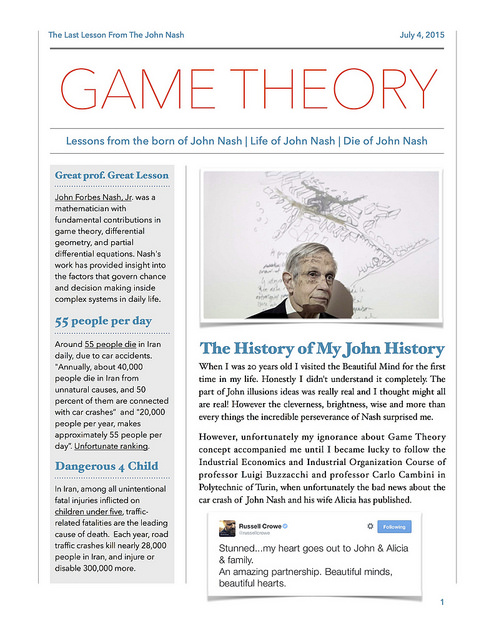
John Nash
John Forbes Nash was born on June 13, 1928 in Blue Field, West Virginia, USA. His most important work is in the field of Game Theory. He was awarded (jointly with Harsanyi and Selten) the 1994 Nobel Prize in Economic Science.
Nash’s history was told dramatized in the 2001 movie “A Beautiful Mind”, in which he was portrayed by Russell Crowe.
Even being most known for his work in economics, Nash achieved great results and published many papers in pure mathematics.
Nash suffered from schizophrenia since 1959, spending periods in hospital. His mathematical work continued successful tough. It was only in the 1990’s that he recovered from his mental condition.
John Nash died on 23 May, 2015 with his wife Alicia in a car crash at the age of 86, soon after receiving the Abel Prize from the Norwegian Academy of Science and Letters, a very prestigious prize in mathematics.
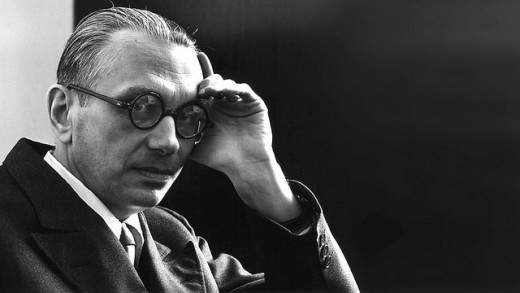
Kurt Gödel
Kurt Gödel was born on April 28, 1906 in Brünn, Austria-Hungary. His most important contribution is the Incompleteness Theorem that states that in any axiomatic mathematical system there are propositions that cannot be proved or disproved with the axioms of the system.
Gödel even proved that if you add the Continuum Hypothesis and the axiom of choice to a consistent set of axioms of the type that was proposed by Russell and Whitehead in “Principia Mathematica”, the set would remain consistent.
Using this result and Gödel’s Incompleteness Theorem, Paul Cohen finally proved that the Continuum Hypothesis could not be proved or disproved, ending the problem left by Georg Cantor many years before.
Gödel suffered from health problems from the age of four. He died on 14 January 1978 as he began to believe that he was being poisoned so he refused to eat and ended up starving himself to death.
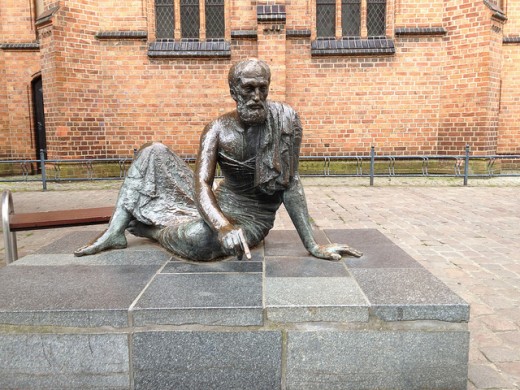
Archimedes
Archimedes was born on 287 BC in Syracuse, Sicily, region where Italy is located now. His father, Phidias, was an astronomer. Archimedes made enormous contributions to many areas such as hydrostatics and mechanic. In mathematics, he made very good approximations of pi, showed that the volume of the sphere is two thirds of the circumscribed cylinder and many other geometry achievements, including integration methods to calculate areas.
The Romans under the command of Marcellus attacked Syracuse. King Hieron, who was a close friend of Archimedes and knew about his brilliance, persuaded him to build machines of war, used to defend the city of Syracuse. These machines gave him fame, but Archimedes believed that only pure mathematics was worthy pursing.
Eventually, even his war machines could not resist the roman attacks. There are many versions of Archimedes death, but it is agreed that he was killed during the capture of Syracuse by a Roman soldier.
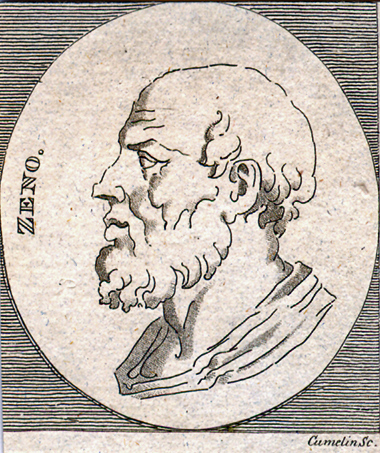
Zeno
Not much is known about Zeno’s life. He was born about 425 BC in Elea, Lucania, located in today’s southern Italy. He is most known for his paradoxes, for example the one with Achilles and the tortoise. In this paradox, we suppose that Achilles is racing with a tortoise. He gives it a little distance advantage. Zeno states that Achilles could never catch the tortoise because whenever he got to the tortoise starting point it would have moved a little. Then, whenever he got to its new location, it would have moved again. Thinking about the problem in this way, Achilles would never catch the tortoise.
There are no confirmed evidences about Zeno’s death. The version we present here is told by Diogenes Laërtius, seven hundred years after the fact. He states that Zeno was arrested taking weapons to the rebels against the tyrant who ruled Elea. He was arrested and asked to give away his accomplices. At this moment, Zeno whispered something and when the tyrant got closer to listen, Zeno bit him and did not let go until he was stabbed to death.

Pythagoras
Pythagoras was born about 569 BC in Samos, Ionia. His name is most associated with the Pythagoras’s Theorem, although he proved many other geometry theorems.
He settled in the city of Crotone and began to teach, forming a society (The Pythagoreans) of students who began to share his philosophies and ideas. It is actually impossible to distinguish between his work and the work of the members of his school, because they practiced communalism and secrecy. They did not study mathematics as modern day’s researchers do. They were more of a philosophical society, more concerned with the understanding of the concept of number, triangle forms and other mathematical figures, as well as the abstract idea of proof.
The Pythagorean Society began to expand after 500 BC gaining more political power and was violently suppressed. Pythagoras fled but died soon afterwards. It is believed that he was killed.
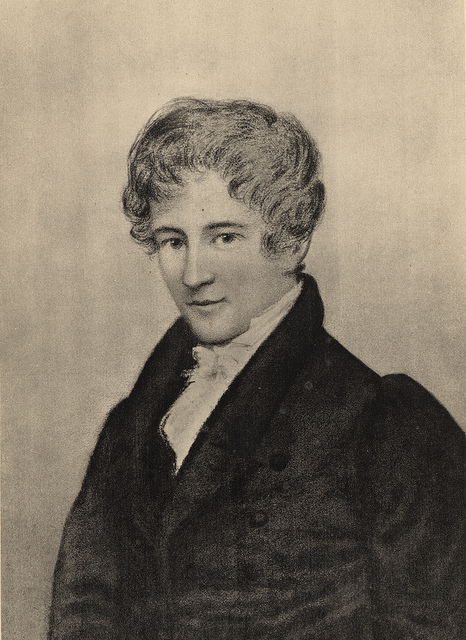
Niels Abel
Niels Henrik Abel was born on August 5, 1802, in Finnoy, Norway. He made extremely important contributions to the field of algebraic theory, developing the Group Theory (Link 18). He also gave the first solution of an integral equation.
Abel lived all his life in poverty. He got a scholarship (Link 18) from the Norway government to travel to France and Germany because of his proof of the impossibility of solving the general fifth degree equation.
After two years, he ran out of money and had to go back to Norway. He was heavily in debt and became very ill.
Abel died from tuberculosis (Link 18). The tragedy in his death does not lie in the actual cause, but in the circumstances. He was only 26 years old and left a fiancée (Link 17). His friend, Crelle, sent a letter informing that he got an appointment in Berlin, which would give him a job at the university. The letter came two days after his death.
Lodovico Ferrari
Ferrari was born on February 2, 1522, in Bologna, Papal States, region where Italy is located today. His most notable contributions are in algebra, including the solution of the quartic equation.
When he was 14 years old, Ferrari was a servant of Girolamo Cardan, an important mathematician. When Cardan discovered Ferrari’s brilliance, he began to teach him mathematics. They became friends and Cardan even resigned his position at the Piatti Foundation in Milan to make way for Ferrari, who became Public Lecturer in Geometry at the age of 20.
Differently from many mathematicians, Ferrari achieved fame and fortune while still alive. He even got a request from the emperor, who wanted a tutor for his son.
He was called to a professorship at the University of Bologna in 1565 but died that same year. It is believed that his own sister, probably to inherit all his fortune, poisoned him with white arsenic. The fact is that she lost everything to her new husband and died in poverty after being left by him.

Alan Turing
Alan Turing was born on June 23, 1912 in London, England. He is considered the founder of modern computation. He played an important part in the World War II, developing the machine called “The Bomb” which was used to crack Nazi ciphers.
Turing’s work was so impressive that he described a modern computer before technology reached a point where construction was possible. He also worked on pure mathematics, specifically in the fields of Group Theory and probability.
Turing was prosecuted when the police found out that he had a homosexual affair with a young man. He accepted probation rather than go to prison but had to accept to be treated with hormones. In other words, he was chemically castrated.
Two years later, he was found dead in bed next to a half-eaten apple. He died from cyanide poison. The coroner’s verdict was suicide, even though his mother always maintained it was an accident.
